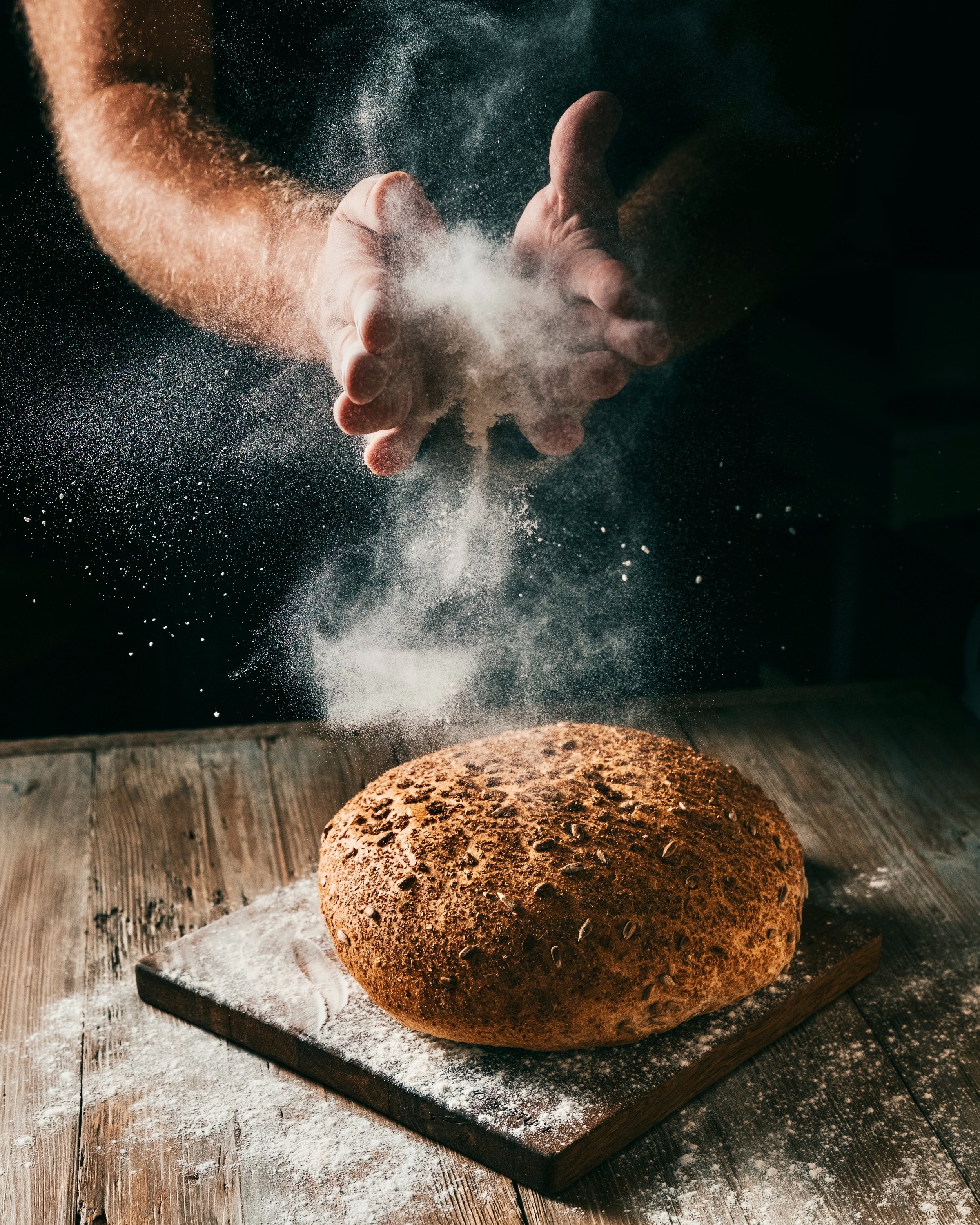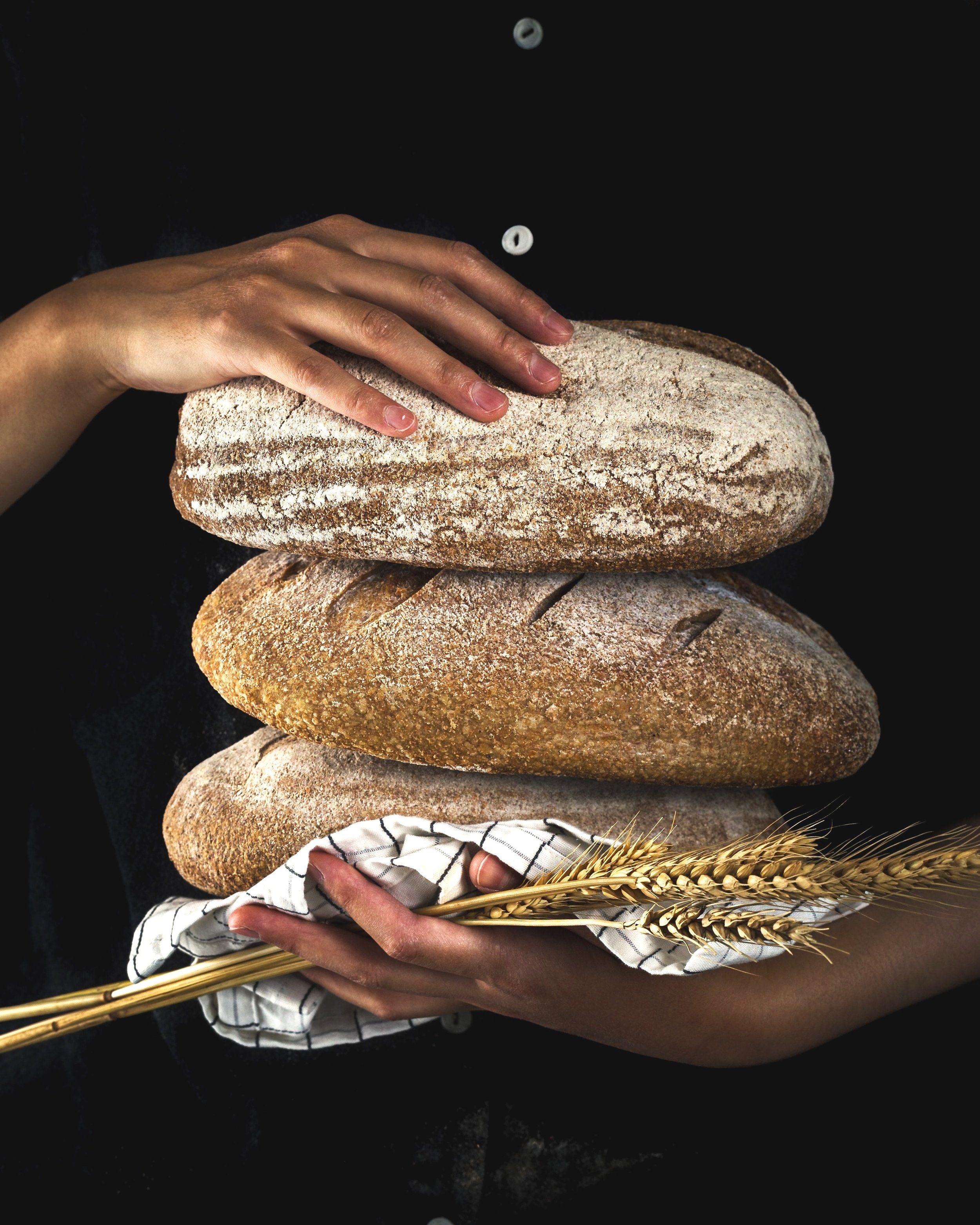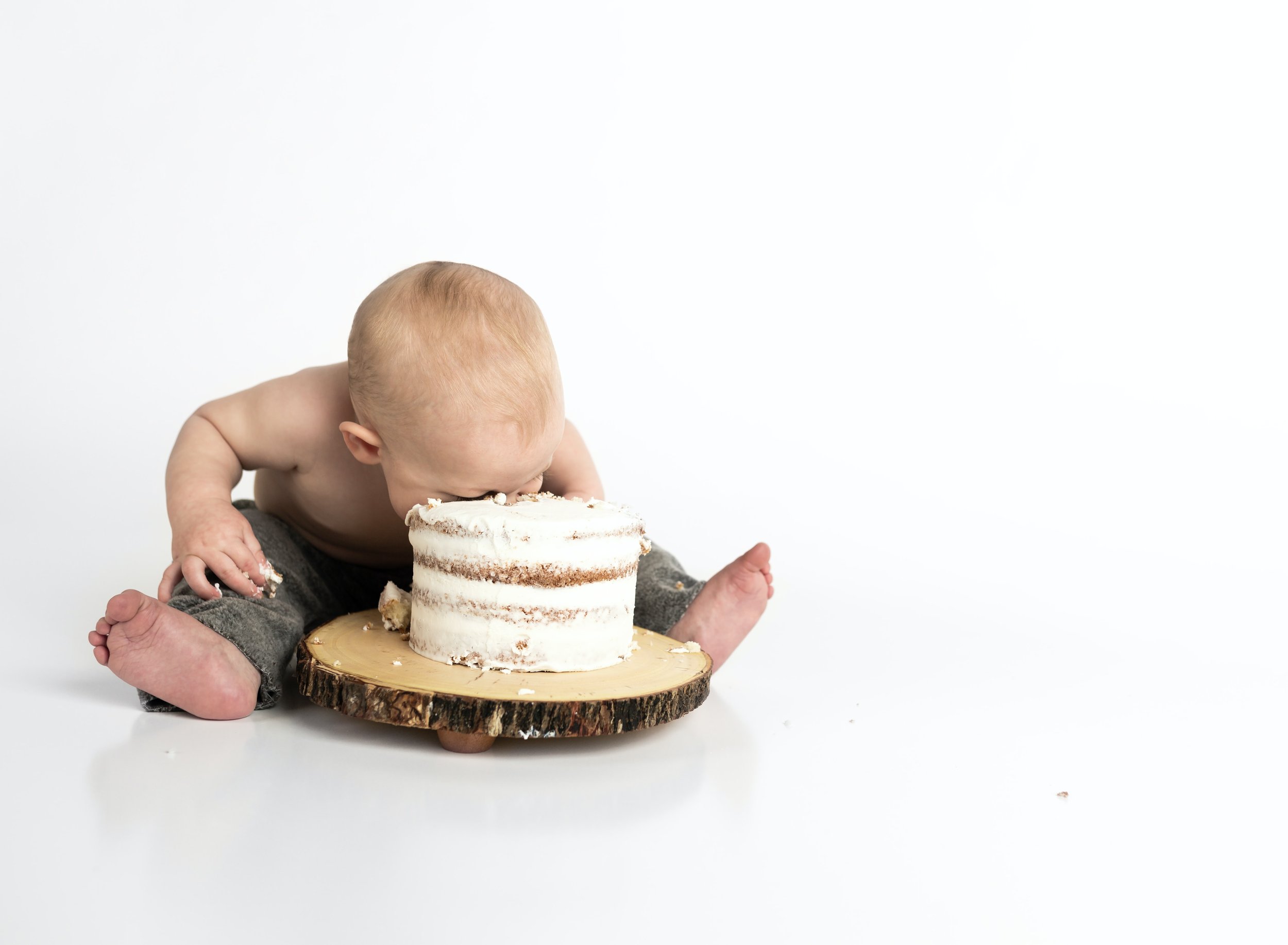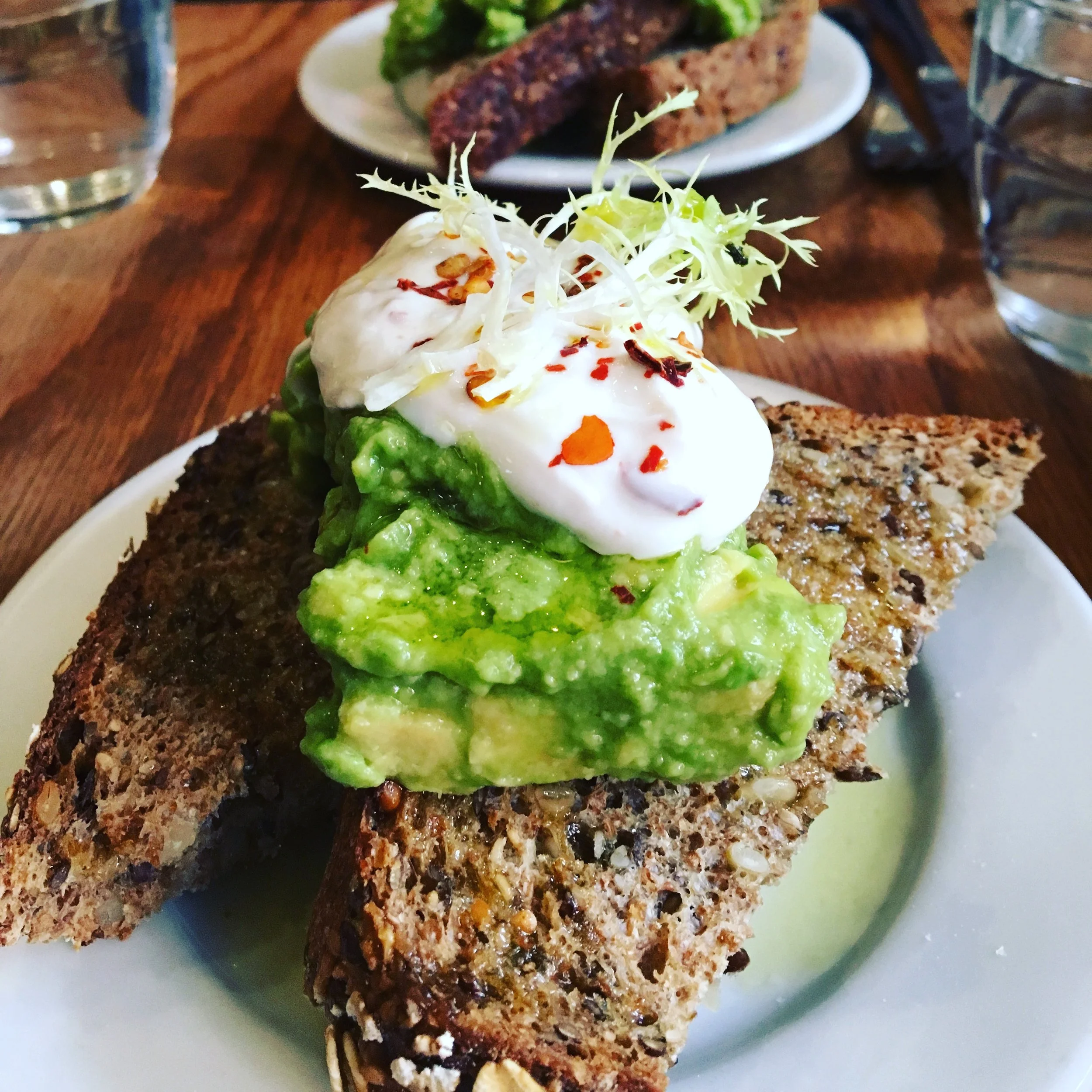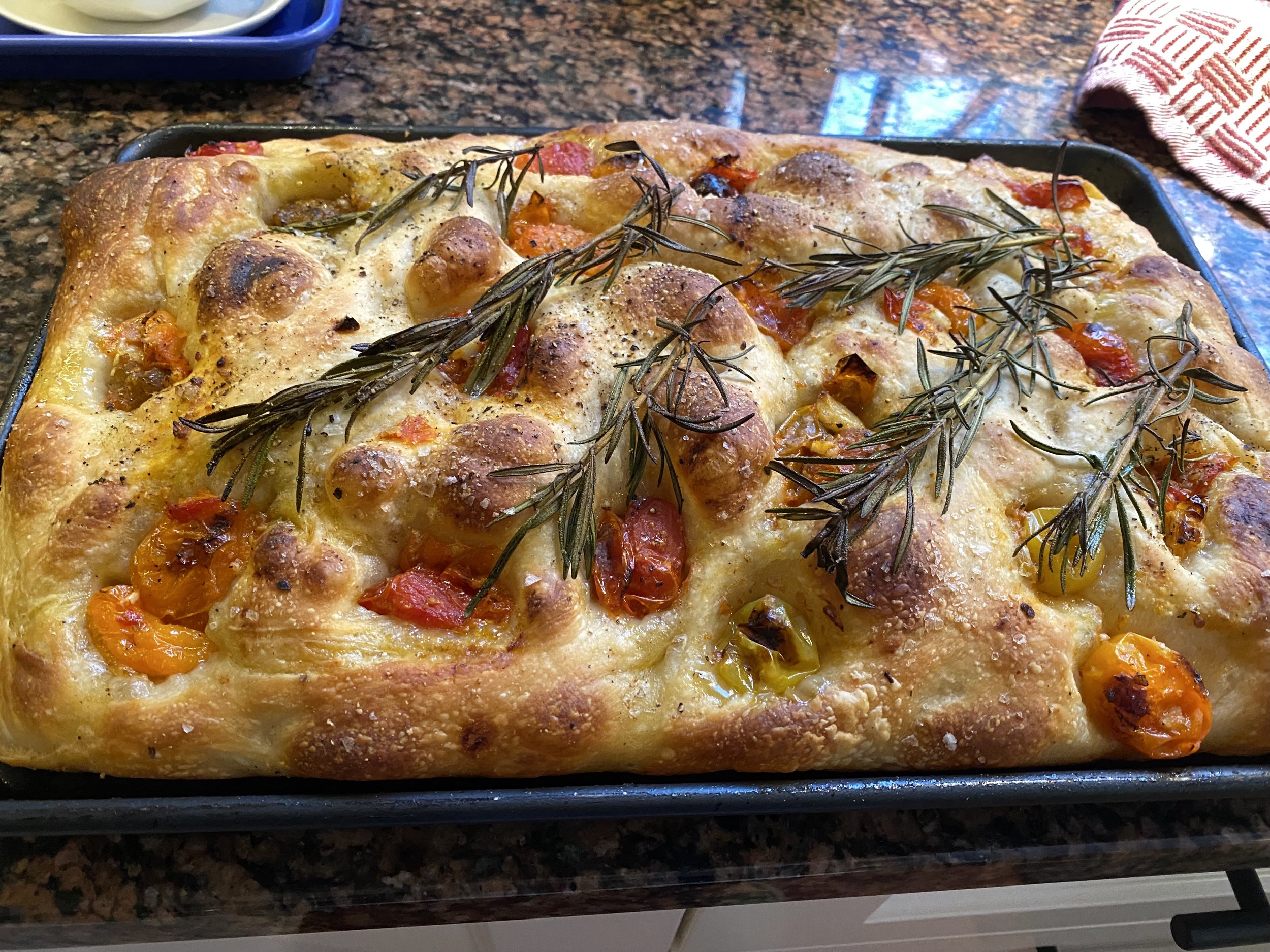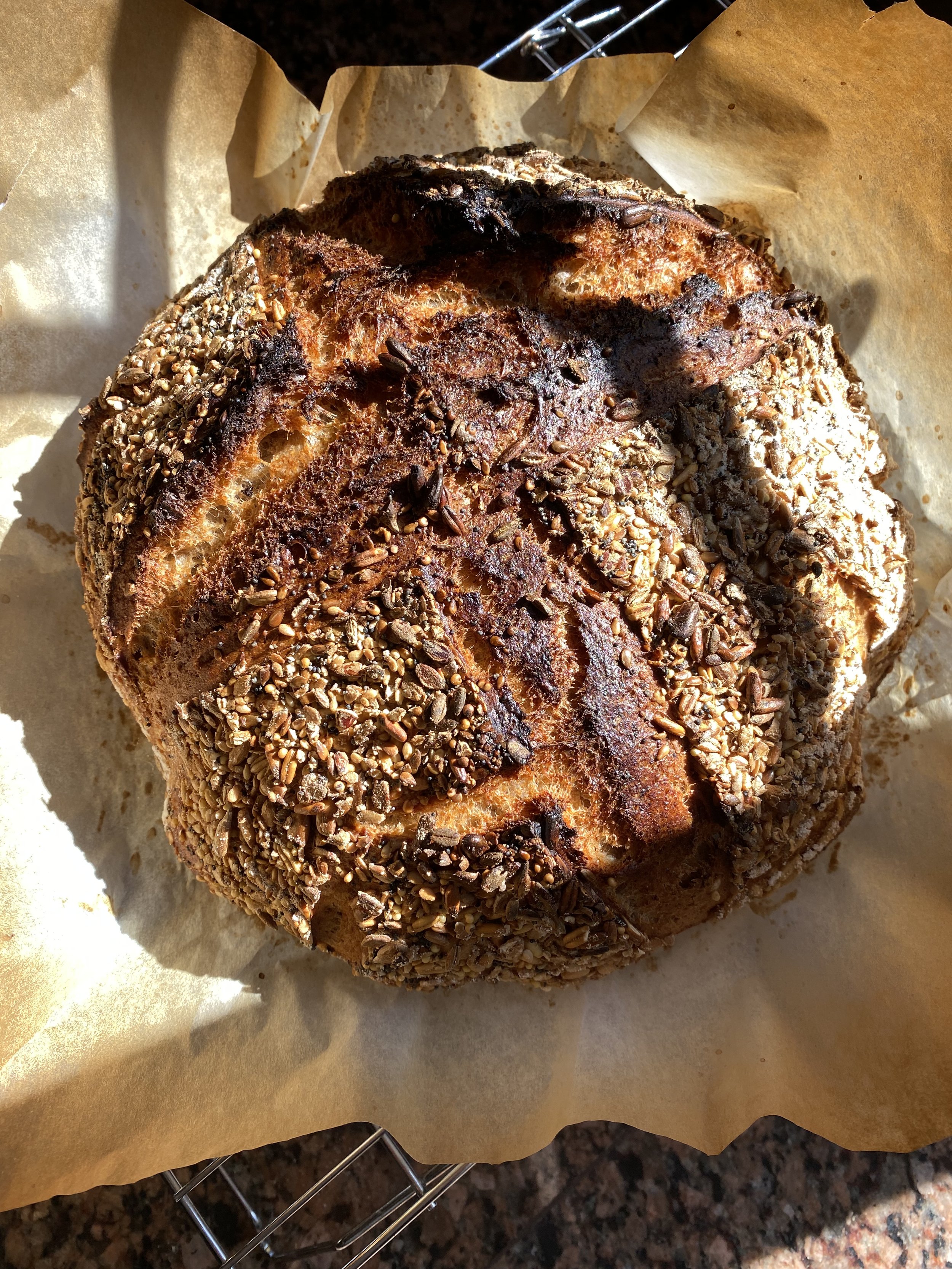My Love Affair With Sourdough
2022
I finally boarded the Sourdough love-train that so many folks have been riding during the pandemic. During the first year of Covid I was more into creating cakes and cookies—bread didn’t really hit my radar as a ‘thing’. But one fine summer day I woke up lovesick with the bread bug and I’ve been smitten with Sourdough baking ever since.
The purpose of this post is to share my Sourdough hacks and simplify the onboarding of a new treat possibility for my readers. I don’t need to tell you about the multiple health benefits of eating fermented foods, or that the longest living humans eat Sourdough bread every day, or that they have 50% better bone density as a result. Sourdough’s superpowers are well known.
I’m more interested in sharing the sensuous experience of Sourdough: of how fun and frivolous it feels to knead, slap, and shape the bubbly dough; about how my starters, Bern and Brot, are like beloved pets I care for; and about how I adore the aroma blasting from my 500- degree oven every time I pull out a seeded boule or bubbling focaccia. This symphony of the senses makes me feel good and grounded, and I can feel my French ancestor’s approval as I slice and savor this product created from ancient traditions.
There is an Urdu word, ‘mazedar’ (Mah-Ze-Dahr) that describes the essence of taste that makes something special—it's the flavor and magic that makes a particular food delicious. This one word captures the life of a flavor experience that is unique to each person but is cohesive in its stories. It represents something that one cannot describe but wants to experience over-and-over again, because it is so pleasurable. For me, the baking and eating of Sourdough is the essence of a mazedar experience.
Sourdough has made my body curvier and my soul softer, it has made my energy in the kitchen more fluid, and it has added a dimension of life-affirming creativity to my days. Something holy happens to me when I am touching this beautiful, live dough that I created. It is there to support and sustain me, and it truly possesses a kind of cellular magic. It makes me feel calmer—and happier—and there is even science to back my observations. Our gastrointestinal system operates its own brain known as the enteric nervous system (ENS). The ENS talks to our central nervous system (CNS) influencing our moods, cognition, mental health, hormones, and immune system. Our gut produces most of the body’s serotonin and fermented foods—like Sourdough and yogurt—provide the gut-friendly links to fuel these mood boosting results.
This is Heike Meyer, my Instructor at Brot Bakehouse in Fairfax , Vermont. Heike is a world-class baker and makes the best multigrain (rye starter) Sourdough you will ever taste. Her school offers day and destination class options. Brot Bakehouse is truly a magical place to learn the art of Sourdough.
Sourdough baking is more of a cult society than I expected—it has a mystique and romance that few food groups conjure, and it inspires a deeply devoted population of bread nerds. It’s a special world of science, artistry, methodology, devotion, and practice. I was curious enough to take a deep dive, and I did so by attending live classes at The King Arthur Academy, Brot Bakehouse, and Appollina Poilane’s Master Class online. In addition to various YouTube tutorials, my daily drips of Sourdough porn come via @maurizio, @challengerbreadware, and @artisanbryan on Instagram.
During my pursuit, I have I made a couple of new ‘bread buddies’ who respond with unmitigated glee when I text them photos of my crumb structure. I purchased and devoured elaborate bread books and discovered that not only are there are a million and one ways to bake Sourdough, but that each baker thinks their method is sacred. The fact is, there is no bona fide right or wrong way to bake Sourdough, it’s as personal and unique as the journey of any romance.
While the spectrum for indulging this hobby is vast, and nerding on this topic is a worthy pastime, the good news is that anyone can bake a tasty loaf of Sourdough bread with a simple routine. You don’t need to invest in anything except good quality ingredients and a modest kitchen scale. As long as you keep your starter alive, which is very easy, you can decide from week to week what your availability to bake is. To keep the learning curve moving forward I try to bake one new recipe every couple of weeks to see if it is exciting enough to add to my repertoire. Right now, I’m trying to perfect Sourdough muffaletta rolls and puffy pita breads.
That said, I am very aware that not all Sourdough bread is created equal, and I don’t want to encourage folks to add more white flour to their diets. The quality of the starter and grains used to bake a recipe influences the overall flavor and nutrition of each loaf. You can increase the quality of any loaf by adding half whole wheat flour to a recipe. I prefer nutrition-forward bread and often experiment using multi-grain combinations that I mill in my Vitamixer. (This is nerding—and definitely not necessary!) I use a rye starter for robust loaves made with Einkorn, Warthog, Whole Wheat, Spelt, and Rye—flours that you can buy already milled—and they serve as our ‘backbone bread’ for weekly enjoyment. But if I am entertaining, I like to trot out this very sexy focaccia made with white King Arthur bread flour because it is a fool-proof crowd pleaser that makes my home smell like a Ligurian bakery.
Throughout my Sourdough courtship I am always striving for three goals:
1. To capture the best practices of each baker I admire.
2. To demystify and streamline techniques so that I can easily incorporate Sourdough challenges into my weekly baking hobby.
3. To master the creation of drop-dead delicious Sourdough products on demand.
Because I don’t follow directions well, and my style is more ‘quick start’ than methodical, my learning curve took time and was filled with many failures and lots of taste testing. Over a period of several months I persevered, and eventually arrived at a place where the crumb, crust, and the crunch of my bread was so satisfying to me that I knew I wouldn’t buy commercial bread again. That was the ‘mazedar moment’ when I knew Sourdough and I would be life partners.
I suggest that new bakers choose one or two recipes they are excited about, maybe a simple white boule and the focaccia to start, using a white flour-based starter, and proceed from there. The best source I’ve found for straightforward baking technique is Alexandra Stafford at Alexandracooks.com—you can begin your love-affair here. Ali is an excellent cooking teacher without pretense, and her results are guaranteed delicious. When you’ve been baking a while and feel friskier and more confident, give my Pain Maison Aux Céréales—a multigrain seeded boule—a go. I’ll be glad to share some of my rye starter with you to keep the romance going.
Pain Maison Aux Céréales (V) by Kim Dannies
This is a hearty Rye, Spelt, Whole Wheat & White sourdough boule, often rolled in seeds before baking. Mix this @ 6-7 am and begin the dough making @4 pm, with an overnight proof. Bake next morning @7 am. This makes one large boule or two smaller loaves.
A. Make the Levain (Mix this @ 6-7 am)
1. In a large mixing bowl add 1-TBS of recently fed mature starter.
2. Add 200-g of warm water and gently mix by hand.
3. Add 200-g of a white-whole wheat flour mixture and combine well.
4. Place leaven in prewarmed microwave and shut door. Let it ferment for 6-9 hours. (my proofing box!)
5. Dissolve 12 g of grey sea salt in 25 g of warm water in a small container and set aside.
6. Test the levain by dropping a small piece in water, if it floats, it is ready, if not, let it ferment a while longer.
B. Make the Sourdough (Begin @4 -5 pm for an overnight proof)
1. Measure 100-g rye; 150 g spelt; 125 g whole wheat, 125 g white flour into the mixing bowl containing the levain. (100% flour)
2. Add 350-g warm water @78° and mix by hand until the dough is a sticky, shaggy mass, about 2 minutes. (75% hydration total)
3. Autolyze Stage: cover dough and rest in a prewarmed microwave for 30 minutes.
4. Next, add the saltwater mixture to the dough and mix well by hand. The dough may pull apart but keep mixing in the saltwater and it will come back together. 2 minutes.
5. Cover dough and return to microwave (my proofing box!) for 30 minutes.
6. Set 5 slash marks on a piece of paper and phone timer. Every thirty minutes for 5 rounds stretch the dough inside the bowl.
7. Start by wetting the right hand, then gently grasp a section of the dough and pull upward. Do not rip the dough. The dough will be sticky and stretch, just give it a gentle pull upwards and then fold it over itself. Be gentle, you are creating the crumb and you want to keep the gases inside the dough. Turn the bowl clockwise as you complete four to six stretches. The dough should be billowy and increase in volume 20-30% as you progress.
C. Shaping the Dough
1. Prep banneton by dusting generously with a rice-whole-wheat mixture.
2. Lightly flour the work surface with whole-wheat flour. Dust the dough with flour and flip it so it is face-side down. Shape the dough by gently folding it in on itself four times, like you are folding a large piece of paper. Flip the dough and using a bench scraper work the dough into a taut round, gently adding tension to it tightening it in clockwise turns for a taut boule.
3. Let it rest 10 minutes, then repeat the tightening turns 2-3 times.
4. **Add seeds at this point if desired.
5. Gently tip the boule into the banneton seam-side up. Cover with plastic wrap and place in fridge. Let rise overnight 8-12 hours.
D. Bake It!
1. Place large Dutch oven in oven and preheat to 500° for at least 30 minutes.
2. Place a sheet of parchment paper on counter and tip the banneton onto the center of it, gently easing dough into place. Using a sharp bladed lame score the dough in desired design.
3. Carefully open hot oven and remove lid. Lift parchment paper into the Dutch, scatter a few ice cubes and place lid on. Close oven door and bake bread at 500° degrees for 25 minutes.
4. Reduce oven to 450°, remove lid and continue to bake bread for 25 additional minutes. It will be a deep chocolate color. Rest bread for at least an hour. After first day, store in a paper bag placed inside a plastic bag to keep it soft.
I’d love to hear from you—feel free to send your comments to me. Please share this post with a friend :) and thank you for reading!




